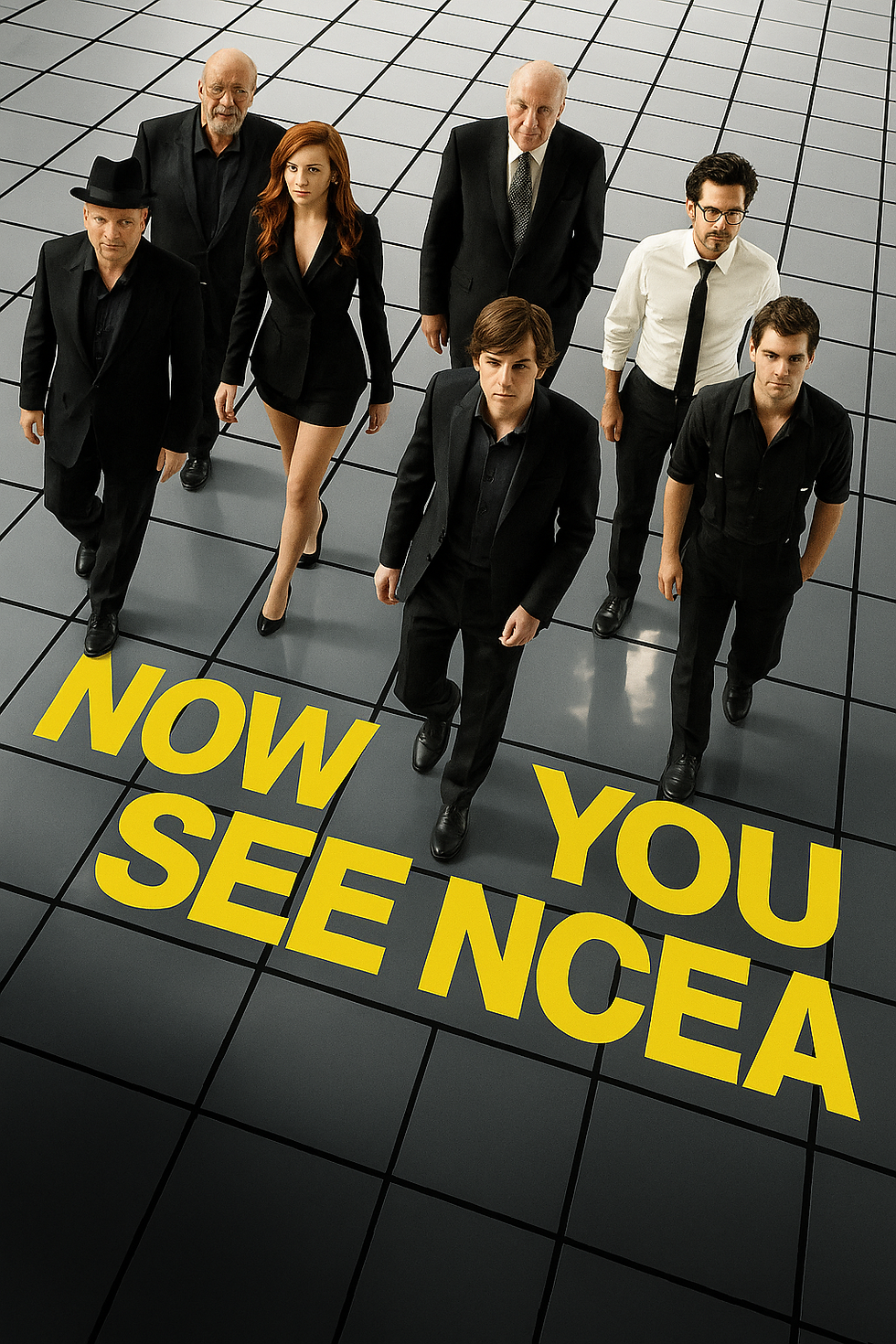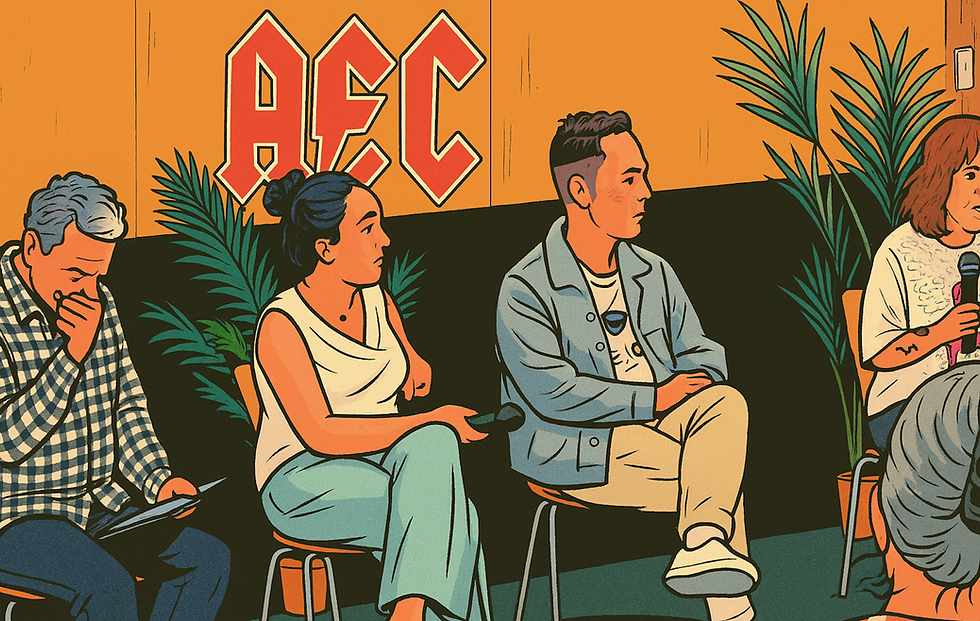Don’t Get Trapped in the Subject List
- Sep 11
- 4 min read
by Rebecca Thomas

They’re counting on us to obsess over the subject list.
To argue about whether Media, Journalism & Communication belongs.
To debate the value of Te Mātai i te Ao Māori.
To feel satisfied that Civics, Politics & Philosophy has finally shown up.
But the subject list? It’s bait.
It’s there to keep us busy while the real changes slip through — deep in the fine print, where power shifts quietly, and policy takes root before anyone realises what's been planted.
Because while the profession is asked to “familiarise” itself, the machine is already moving — and what it’s committing us to should have every kaiako, every whānau, and every leader wide awake.
Because buried right at the top of the document — above all the "exciting changes" and “expanded choices” — is the real act of disappearance.
Once the subject list appears, it’s too late.
By the time we’re debating whether Outdoor Ed belongs, the core vision has already locked in.
The handshake’s happened.
The money’s moved.
The rollout dates are set.
Everything else is theatre.
This Isn’t a Subject Refresh. It’s a Structural Rewrite.
What’s being presented as curriculum enhancement is, in reality, a full-scale system redesign. Let’s unpack what’s buried under the polished subject list.
1. Curriculum Will Drive Everything — Not the Qualification
It sounds like progress. But this is where the sleight of hand begins.
Right in the heart of the document, we find this line:
“Each subject’s curriculum will clearly outline the essential learning… ensuring that teaching and learning are driven by the curriculum, rather than the qualification.”
At first glance, it feels logical. Even overdue.
But read it again.
Slowly.
This is a tectonic shift in how education will be structured in Aotearoa.
Where NCEA once empowered kaiako to build learning around ākonga, this new model puts centralised, predetermined content in the driver’s seat.
It flips the system:
Learning no longer flows toward qualification.
Instead, curriculum becomes the master script.
Assessment is simply a checkpoint — not a tool for transformation, but a mechanism for measuring conformity.
Qualifications become an afterthought.
Flexibility disappears.
Innovation? Relegated to the margins.
The change in curriculum isn’t just reform — it’s the reason NCEA must now be erased.
And because it looks like “alignment,” the profession is expected to comply without question.
2. The Qualification Framework Is Missing — On Purpose
Search the document. You won’t find:
NCEA Levels
Internal vs external assessment
Credits, standards, or moderation processes
What you’ll find instead is a new curriculum framework that behaves as if NCEA no longer exists.
Because it won’t — at least not in any form that reflects what teachers and kaiako have built their practice around for over two decades.
3. Industry Partners Will Define Key Learning Areas
“Subjects the Ministry will commission Industry Skills Boards to develop…”
This isn’t partnership. It’s outsourcing.
It opens the door for external, corporate influence over curriculum content — especially in vocational pathways. While industry insight can be valuable, this model allows non-educators to define what “success” looks like, with little room for relational, culturally grounded approaches.
This is about producing job-ready outputs, not whole, thriving humans.
4. Professional Learning Will Enforce Delivery — Not Develop Thinking
“Curriculum Days… Roadshows… Implementation Packages…”
PLD is framed as support. But this is training, not transformation. It’s designed to help teachers comply, not question.
Nowhere does it say kaiako will shape the curriculum.
Nowhere does it suggest schools and kura have influence in design.
Because they don’t.
That work is done.
The money has changed hands.
The handshake’s already happened.
This PLD is to prepare us to deliver what’s already been sold — not to shape what could be built.
5. The Timeline Tells the Truth
“Implementation begins 2028 for Year 11, 2029 for Year 12, 2030 for Year 13.”
Despite claiming we’re in a “consultation phase,” the dates are final. The rollout is resourced.
The machine is moving.
This is not a draft.
This is a commitment.
And the sector is being softened into acceptance through “subject familiarisation” while the real shifts go unchallenged.
What Are We Really Being Signed Up For?
This is not about giving students more choice.
It’s about:
Re-centralising power
Silencing professional judgment
Erasing learner agency
Normalising industry-driven content
Giving power to those who already hold power in the industry
Phasing out NCEA without naming it
It’s a return to old models — dressed in the language of clarity and progress.
And the saddest part?
Many won’t even notice until it’s too late.
So, What Now?
If you’re reading this, it means you haven’t been distracted by the subject list.
You see the machinery underneath.
And that’s where our strength lies — in refusing to be sedated by shiny offerings while the foundations of our profession are being rearranged beneath us.
The fine print tells the real story.
And we must keep reading.
Loudly.
Critically.
Together.
Because if we don’t challenge this now, we’re not just changing what we teach — we’re giving up who gets to decide.




Comments